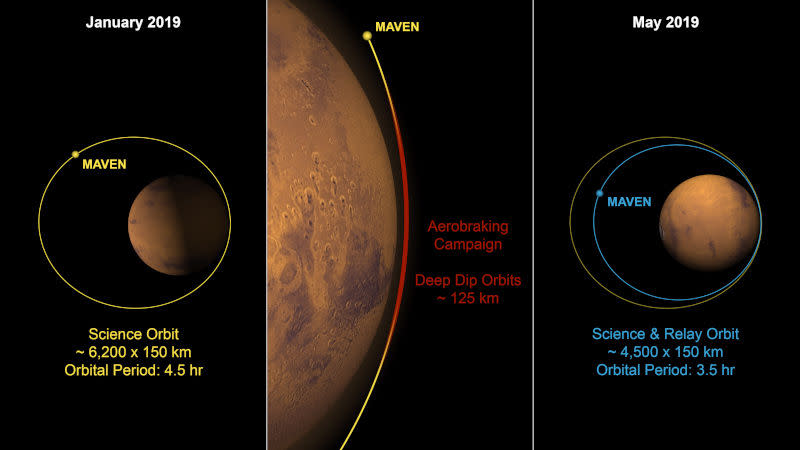NASA puts a key satellite in place for its Mars 2020 mission
It's tightening the MAVEN probe's orbit and bringing it closer to the red planet.
NASA is preparing for the Mars 2020 mission by bringing the MAVEN probe, which will act as its antenna and connection to Earth, closer to the red planet. Over the next few months, the spacecraft will fly closer and closer to Mars until it's only 2,800 miles above the surface, down 1,050 miles from its current orbit. That will boost the probe's communications capabilities: As MAVEN principal investigator Bruce Jakosky explained, "It's like using your cell phone. The closer you are to a cell tower, the stronger your signal."
To tighten MAVEN's orbit, NASA will fire its thrusters in the next few days to lower its altitude a bit. It will then rely on the drag provided by the red planet's upper atmosphere to slow it down every time it circles and planet and to change its trajectory in a technique known as "aerobraking." NASA says aerobraking, which can be described as something like putting your hand outside a moving car, will allow the agency to achieve its goal while using very little fuel.
In addition to providing a stronger signal for the rover, the move will also allow the spacecraft to communicate with Mars 2020 more frequently. By orbiting at a lower altitude, the probe can circle Mars 6.8 times per (Earth) day instead of just 5.3 times, giving it a way to receive more data. MAVEN, which stands for Mars Atmosphere and Volatile EvolutioN, was deployed to take a closer look at the Martian atmosphere and water. Since it entered the Martian orbit in 2014, it was able to help scientists determine that solar wind and radiation were responsible for stripping Mars of most of its atmosphere and that the planet has two types of auroras, among other discoveries.




